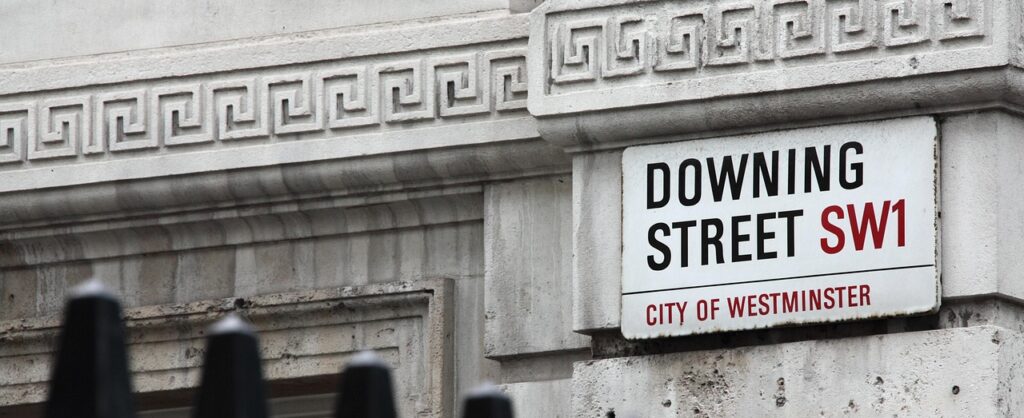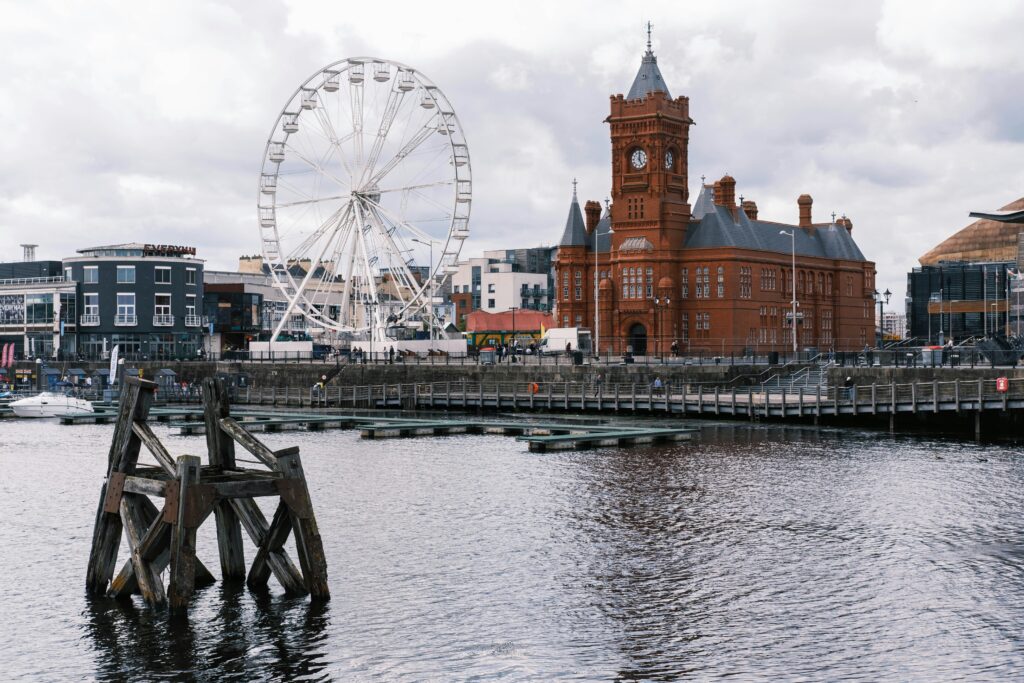
Shrinking British homes emerge as housing crisis worsens
The housing crisis in the UK means houses are shrinking to the size of University hall bedrooms.
The UK is in the midst of a housing crisis, with a serious shortage of existing properties and new homes being constructed. Such high demand for homes is far outweighing the current supply. In turn, house prices are sky-rocketing at a rate far higher than relative earnings. As a consequence, developers are seizing on the opportunity to sell sub-standard housing for the inflated prices, and councils are approving ex-commercial property being converted to small apartments (or, ‘micro homes’).
Homes are shrinking predominantly in the lower end of the market, whilst houses at the top end are reaching sizes of 7,315 square metres and above – demonstrating a shocking disparity.
A UK law on space standards came into force in 2015 which requires flats to be at least 37 m², and sets out minimum guides on new homes. A three bed, five-person house would need to be a minimum of 93m² to fall in-line with regulations. Due to recent law changes in 2013, the Government relaxed the planning laws to allow the conversion of office buildings into residential housing without the need to go through the same planning process. As a result, these buildings could fall far below the recommended size. Last year ex- commercial property provided 12% of new homes in England.
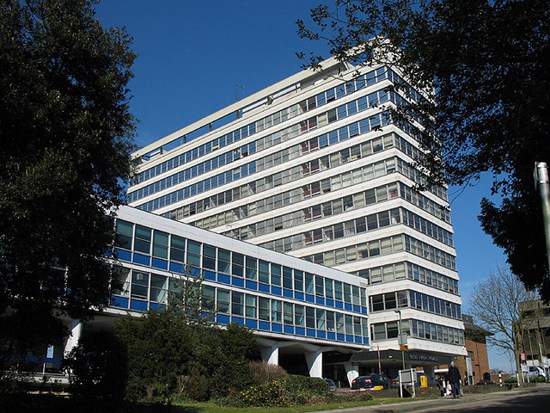
Barnet House, ex-commercial property in Whetstone which is undergoing conversion to homes
Barnet, North London, recently made the headlines due to an office block being renovated into studio flats (or ‘micro homes’) of just 16m² (21m² below what is recommended –roughly the size of a university hall apartment). Similar properties have popped up in Archway, measuring a tiny 13.5m², and Croydon measuring 14.9m².
Across the country, an increasing number of people are living in entire homes the size of the average bedroom.
Despite these examples being in London, London actually has the largest homes in the country, with an average size of 108.5 square metres for a new build, 11 metres squared less than 4 years prior, yet still larger than the minimum recommended size. On the other end are new homes in Yorkshire, the smallest in England at just 84 m², followed by the North East [All based on averages of 3 bedroom houses for 4 persons].
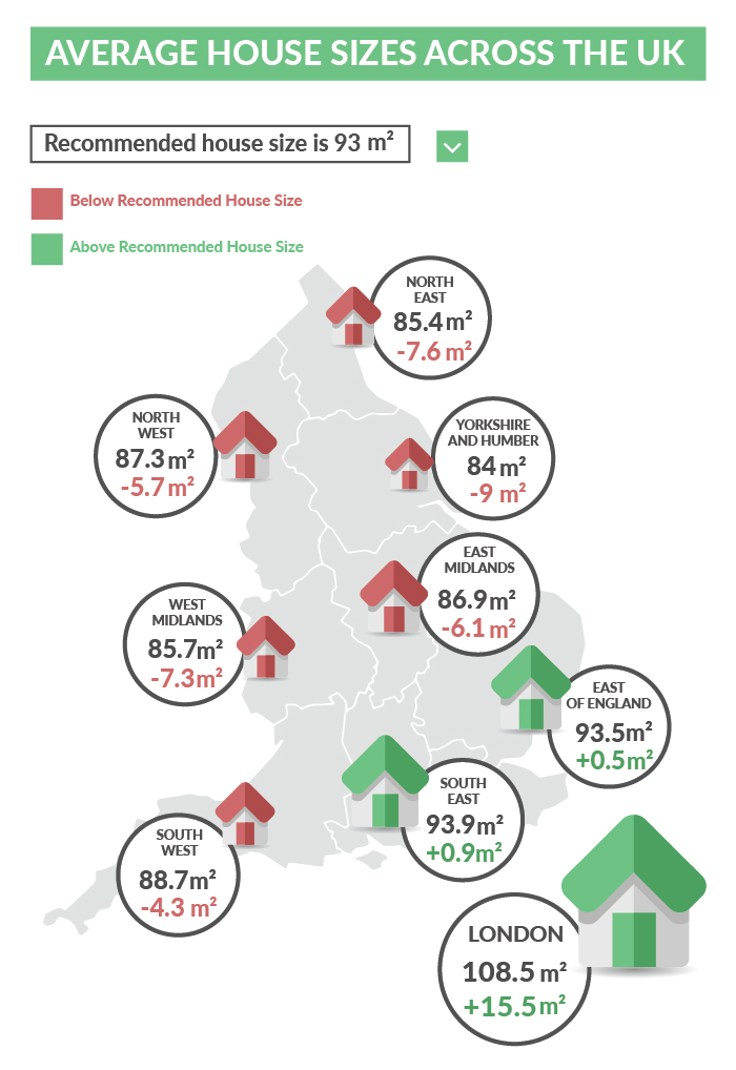
Furthermore, as waiting lists for homes grow, several cities (London and Edinburgh, for example) have taken it into their own hands to adopt their own standards to keep up with the growing demand.
Across the country, two persons ‘apartments’ of less than 14m² (the size of a typical bedroom) are being delivered.
The UK has among the smallest homes across Europe and the smallest size allowances. Even other countries with dense populations such as Netherlands and Germany have far larger homes (115.5m² and 109.2m² respectively). It is the Danes who enjoy the roomiest homes with the average Danish abode at 137 m², coincidentally Denmark frequently tops the ‘happiest country’ chart. Spain and Italy come close to the UK with 96.6 and 76 respectively.
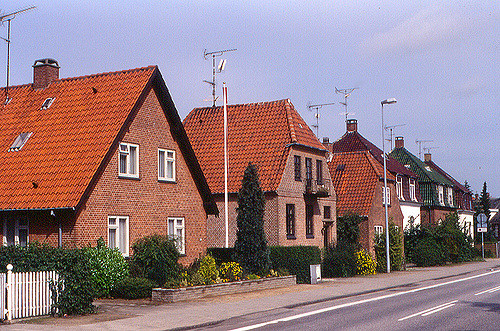
Danes enjoy the largest houses in Europe at an average 137m2
It is important for most people to have enough space to store their possessions, relax, exercise and entertain friends. Without having this important space, it can lead people to feel crowded, trapped and claustrophobic. It is more difficult to carry out simple every day activities such as cooking, cleaning.
However, many people are happy to, and indeed choose, to live in small homes because they are not often at home, it fits in with their lifestyle, or they merely do not desire or require a lot of space. Additionally, they offer lower rents than the surrounding area.
We spoke to Claudia, 25, a knitted textile designer from Brighton who lives in a micro-flat of a mere 13 m² in total, about her experiences of living there.
“I have one half of the loft of an old terraced house, it measures about 13m² all together so it’s pretty tiny, but with the sloping as well, fitting in furniture was a nightmare.
However, the benefits are that the rent is really cheap and because I’m so high up, I get a great view! When I first came to view the flat, I was at the end of my tenancy and needed somewhere affordable to live immediately.
Although the flat was very small, I was moving out of an unfurnished property so didn’t have loads of stuff to fit in. The biggest negative of the flat is that I’m spending a lot more time working from home than I had anticipated when I originally moved in.
I have a pretty big knitting machine, that takes up a lot of room in what is already a small space, so it’s very crowded. However, if I wasn’t working from home, I’d have no trouble at all making this flat work, it’s just important to be a bit more selective about items you want versus items you need.”
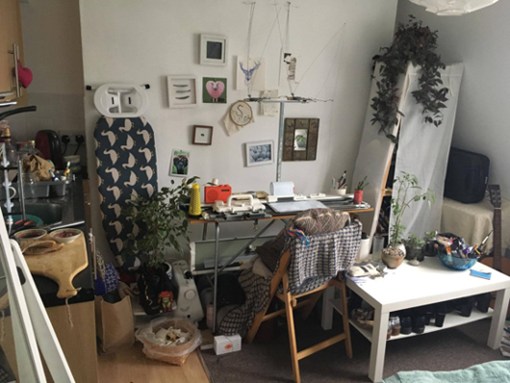
Claudia’s home in Brighton
Photo Credits – First photo: © Copyright Martin Addison and licensed for reuse under this Creative Commons Licence. Second photo: Roger W / www.flickr.com
Feature image credit: Jozef Sowa/Shutterstock
